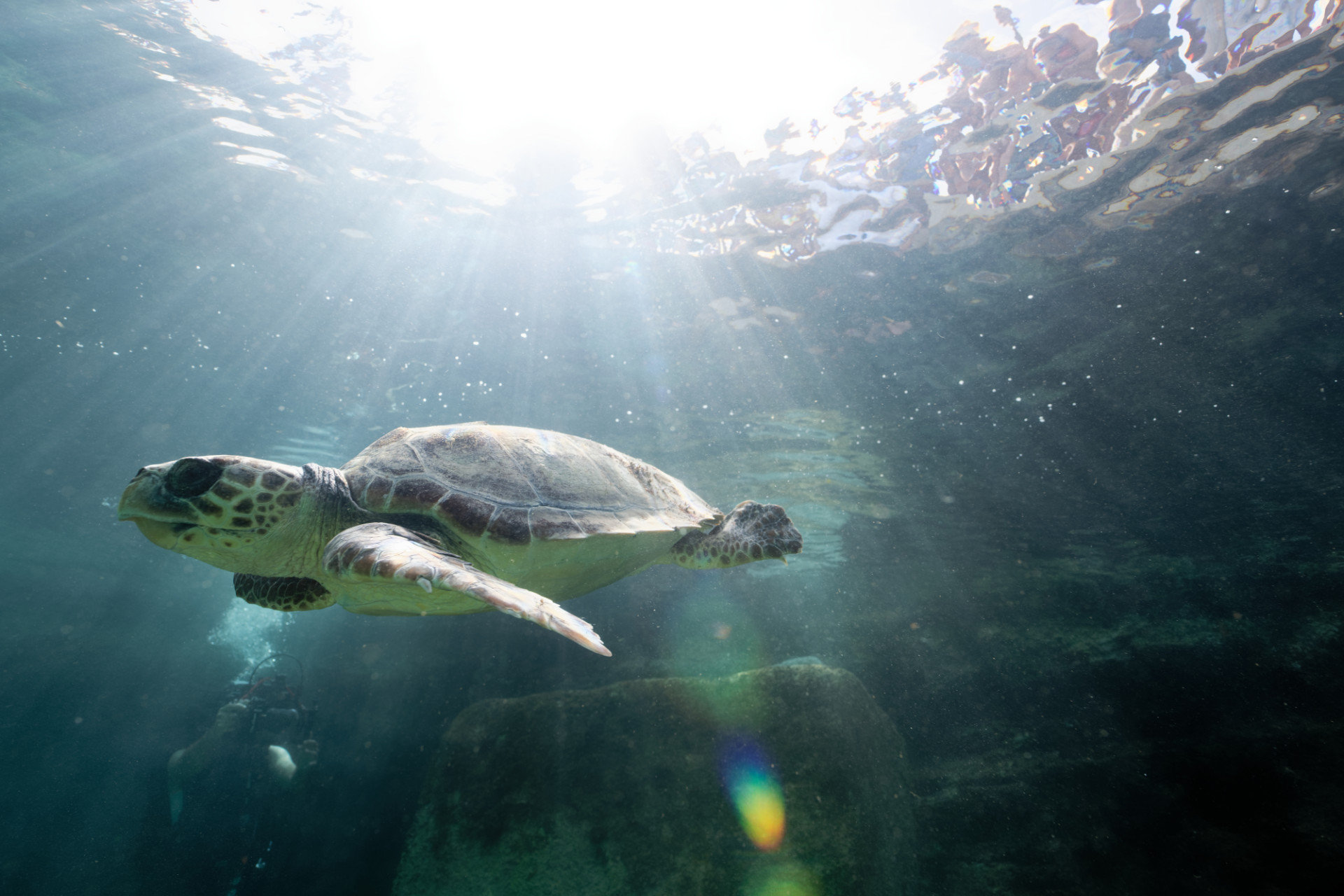
How do sea turtles live in the open sea? A question that remains unanswered to this day. Despite a little over 60 years of scientific study, with several hundred publications each year, marine biologists have gathered meager data on the offshore life of sea turtles.
How do these marine reptiles feed? How often do they rest? How do they orient themselves in the open sea? What dangers linked to human activities do they face? Paolo Casale is dedicated to filling these blanks. As a marine biologist researcher and teacher at the University of Pisa (Italy), he asked the Octopus Foundation to develop a new open source tool. The aim is to record 12 hours of high definition POV (point of view) video, to follow every step of a Mediterranean marine turtle in the open sea. Project “REMORA” was born.
Technology at the service of science
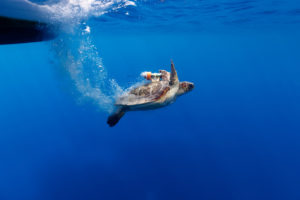 Because of the high cost for satellite data, scientific research has always been limited to geographic movements of sea turtles. Trackers on the animals’ shells transmit GPS coordinates, but these points ultimately say very little about the turtles’ daily lives, their interactions with the ecosystem. After several months of operations, the vast majority of these devices fail to be retrieved and end up falling to the bottom of the sea.
Because of the high cost for satellite data, scientific research has always been limited to geographic movements of sea turtles. Trackers on the animals’ shells transmit GPS coordinates, but these points ultimately say very little about the turtles’ daily lives, their interactions with the ecosystem. After several months of operations, the vast majority of these devices fail to be retrieved and end up falling to the bottom of the sea.
We therefore worked with Paolo Casale to imagine a device as small as possible which could film in high definition for at least 12 hours. After recording the subject’s activity, it would detach from the shell to float back up at the surface. In order to be retrieved by boat, the device must transmit its position via satellites and radio. The fact that it can be recovered means the REMORA can then be used again and again on other turtles.
REMORA: suckerfish and strapped camera
The name REMORA comes from this fish which uses its sucker-like organ to temporarily attaches itself to a larger marine animal, such as sharks, whales or turtles. The large host provides free transportation, while the passenger will take care of parasites and help clean the skin. Win-win.
 For the first prototype of this new research tool, the technical team of the Octopus Foundation started with basic and ambitious constraints: the weight of the device must not exceed 3% of the animal’s weight (600 grams is the maximum for a 20kg-turtle); open source and inexpensive technology must be used (less than 2000 Euros) ; finally, it must survive a pressure of 15 bar, which corresponds to a turtle diving at 150m deep in saltwater.
For the first prototype of this new research tool, the technical team of the Octopus Foundation started with basic and ambitious constraints: the weight of the device must not exceed 3% of the animal’s weight (600 grams is the maximum for a 20kg-turtle); open source and inexpensive technology must be used (less than 2000 Euros) ; finally, it must survive a pressure of 15 bar, which corresponds to a turtle diving at 150m deep in saltwater.
With this series of specifications, Quentin Orhant and Andy Guinand, our two main technicians, worked for several months to develop the first prototype. Today we have the immense privilege of presenting to you some of the characteristics of this “REMORA v0.1”.
Electronic puzzle
For this prototype, we limited ourselves as much as possible to existing, inexpensive elements. Its saves time and cost, but you need to find the correct pieces that fit together to build a puzzle.
This first version of the REMORA is divided in four main parts: The tube (1) with its buoy (2) allowing it to float, the laser-cut wooden support in four assembled pieces (3), and an elastic band which holds the tube to the wood support thanks to a galvanic anode (4) which dissolves in sea water. For this first prototype, we used an anode which dissolves in 11-12 hours. Only the wooden support is glued with two strips of epoxy glue to the turtle’s shell. It will detach by itself after a few days.
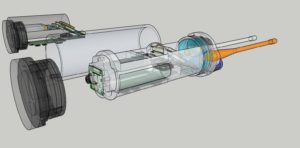 For the casing we used a 15 cm long acrylic tube (theoretically waterproof to a depth of 200 meters) with two aluminum and acrylic caps. Inside this waterproof tube, the electronics are divided into two distinct parts: the data recording part (video and sensors), and the communication part used to recover the device.
For the casing we used a 15 cm long acrylic tube (theoretically waterproof to a depth of 200 meters) with two aluminum and acrylic caps. Inside this waterproof tube, the electronics are divided into two distinct parts: the data recording part (video and sensors), and the communication part used to recover the device.
First of all, the video and sensors part is controlled by a Raspberry Pi Zero 2W. This small computer manages the POV wide-angle camera and the inertial device which records all the movements of the turtle. The depth is calculated by a pressure sensor located on the rear cap. Two Lithium-Ion batteries of 3000 mAh each are used to record approximately 12 hours of video and data.
When the anode has finished melting, the rubber band is released and the device floats back to the surface. Air is enclosed in the tube, but it also has a small buoy to help rise back. This buoy’s shape was 3d-printed and filled with cubes of incompressible foam. This foam is very resistant, as it was originally manufactured for small wire-guided submarine. It is designed to withstand the pressure of about 100 bar, a depth of 1000 meters!
Recording finished, time for recovery
Once the REMORA rises to the surface, the camera and sensors have finished their job. It’s now time for the two communication modules to start working: the first is the “ARGOS” device that is designed to use its antenna to send approximate positions (within 1-2 km). The mains advantages of the ARGOS constellation are its low cost and power consumption, while its main drawback is its resolution. It’s not precise enough to expect an open sea retrieval. This is why we have a second antenna with a LoRa emitting device. This module emits sounds on a worldwide frequency requiring no special authorization (433 MHz). These two communication modules are powered by a separate 1000 mAh LiPo battery, allowing transmissions for approximately 72 hours.
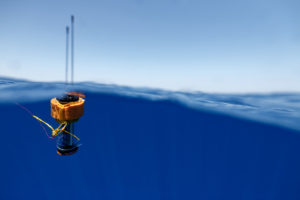
In the recovery phase, we are initially guided by the vague ARGOS positions. Once we arrive in the area by boat, we then use our LoRa directional reception antenna to narrow down the position of the REMORA. That’s for the theory.
After six months working on the first prototypes, Quentin and Andy met the expectations of assembling, 3D printing and operating the REMORA v0.1. 12 hours of high definition video (Full HD) can be recorded, alongside all the spacial movements of the animal (inertial unit). ARGOS and LoRa transmits as intended. Finally, the device weighs a total of 564 grams (wooden frame included), and the cost of materials amounts to a total of 1010 Euros. Which, in itself, is a real technical achievement.
Field success
In June 2023, the Octopus Foundation team traveled with two working REMORA prototypes on a mission to the island of Kefalonia (Greece). We met with local biologist Nikos Vallianos (Wildlife Sense). The first real-life test took place in the Argostoli lagoon, where we were able to record 10 hours and 50 minutes POV footage of a 50kg male Caretta caretta turtle. After about 11 hours, the anode melted and released the beacon which began transmitting its ARGOS positions.
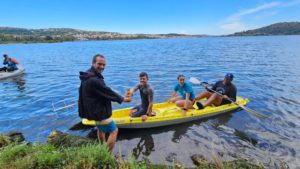 The REMORA floated and transmitted all night, and early the next morning we were able to find it thanks to our LoRa receiver. A small amount of sea water was found in the casing, but other than that, this first test was a real success for the whole team. We proved this device could work and provide real useful data to biologists, allowing them to ultimately better understand these marine reptiles.
The REMORA floated and transmitted all night, and early the next morning we were able to find it thanks to our LoRa receiver. A small amount of sea water was found in the casing, but other than that, this first test was a real success for the whole team. We proved this device could work and provide real useful data to biologists, allowing them to ultimately better understand these marine reptiles.
